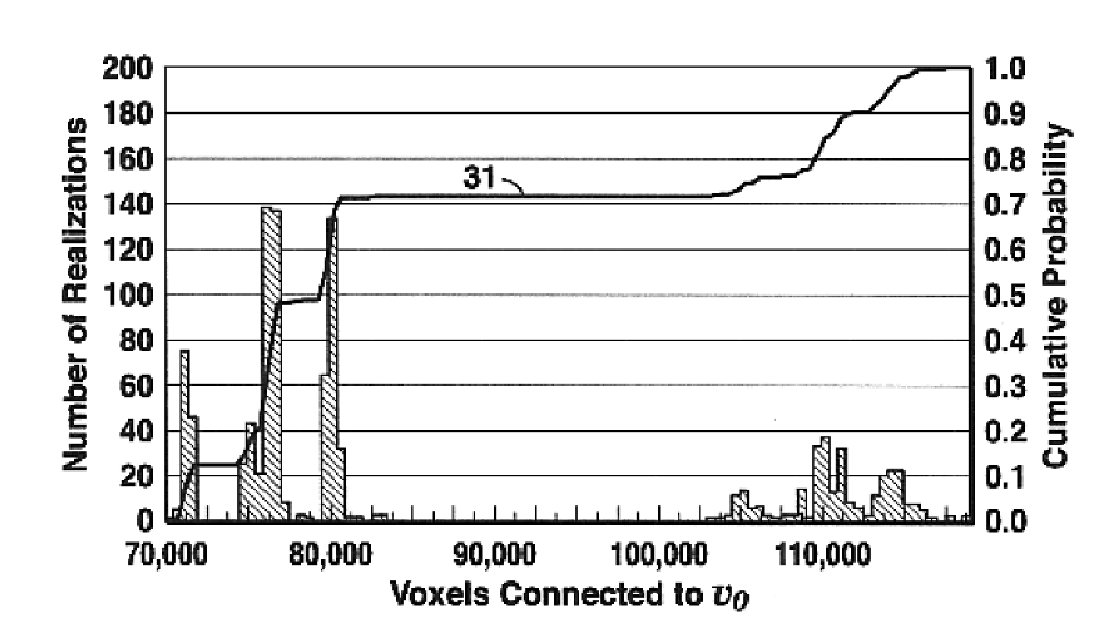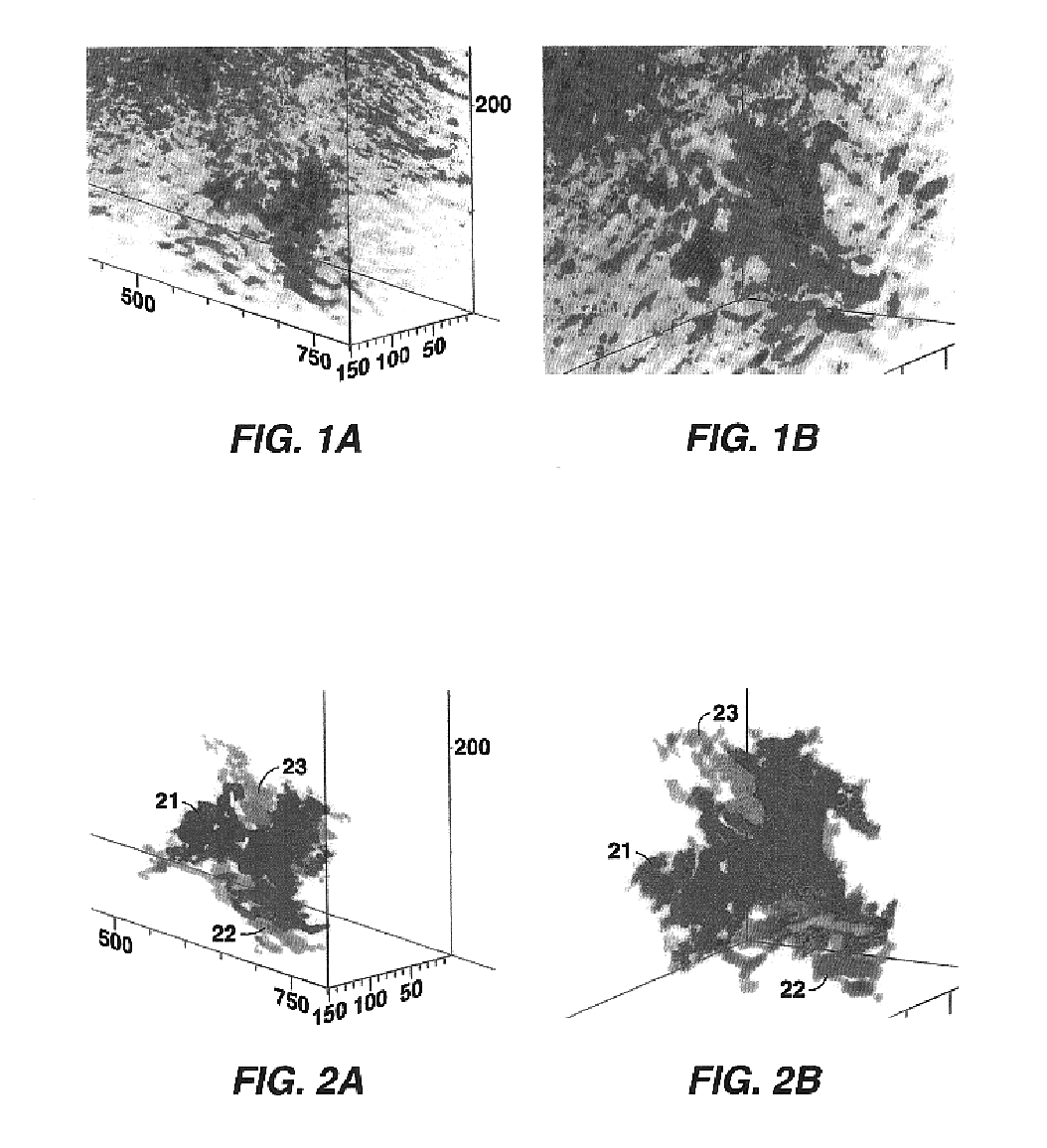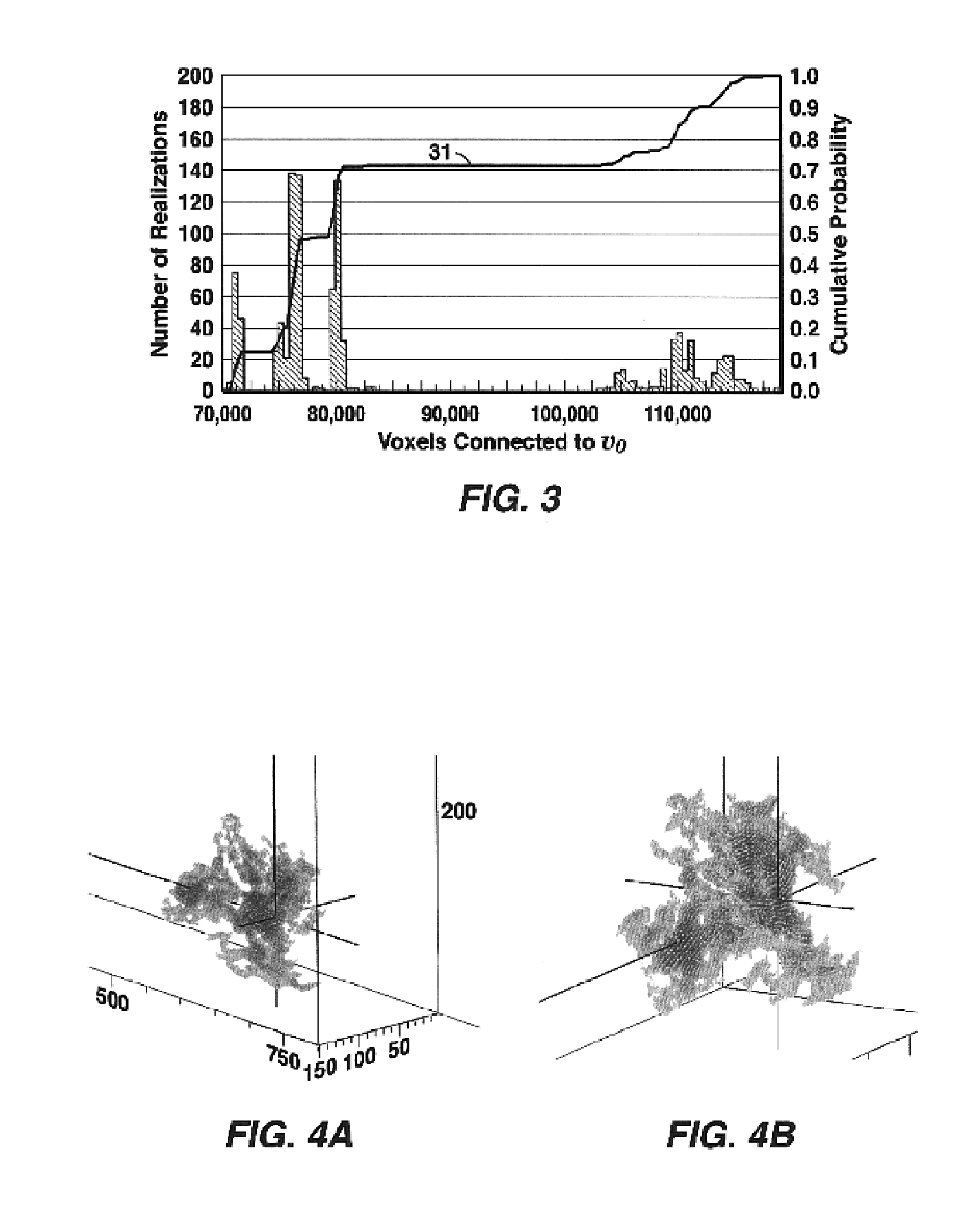Method for estimation of size and analysis of connectivity of bodies in 2- and 3-dimensional data
a technology of connectivity and estimation method, applied in the field of geophysical prospecting, can solve the problems of noisy geological data such as microscopic images, seismic data volumes, wellbore images, etc., and achieve the effect of avoiding the formation of a voxel valu
- Summary
- Abstract
- Description
- Claims
- Application Information
AI Technical Summary
Benefits of technology
Problems solved by technology
Method used
Image
Examples
Embodiment Construction
[0027]The present invention applies equally to two-dimensional images and three-dimensional volumes. The description that follows will be based on application of the invention to three-dimensional volumes, and will use the term “voxel” to refer to a cell in three-dimensional space. The terms “image” and “pixel” may be substituted for “volume” and “voxel” throughout the following description to convert the terminology toward two-dimensional applications. Similarly, the present invention is often discussed below in terms of its seismic applications although it is not limited to seismic applications. A data volume may be called a “seismic attribute cube” or similar term, where “cube” is used for convenience without regard to whether its sides are equal or its voxel subdivisions are uniform in all three dimensions. A body may be described as a region of connected voxels in, for example, an acoustic impedance data volume characterized by each voxel in the region having a value of acousti...
PUM
 Login to View More
Login to View More Abstract
Description
Claims
Application Information
 Login to View More
Login to View More - R&D
- Intellectual Property
- Life Sciences
- Materials
- Tech Scout
- Unparalleled Data Quality
- Higher Quality Content
- 60% Fewer Hallucinations
Browse by: Latest US Patents, China's latest patents, Technical Efficacy Thesaurus, Application Domain, Technology Topic, Popular Technical Reports.
© 2025 PatSnap. All rights reserved.Legal|Privacy policy|Modern Slavery Act Transparency Statement|Sitemap|About US| Contact US: help@patsnap.com



